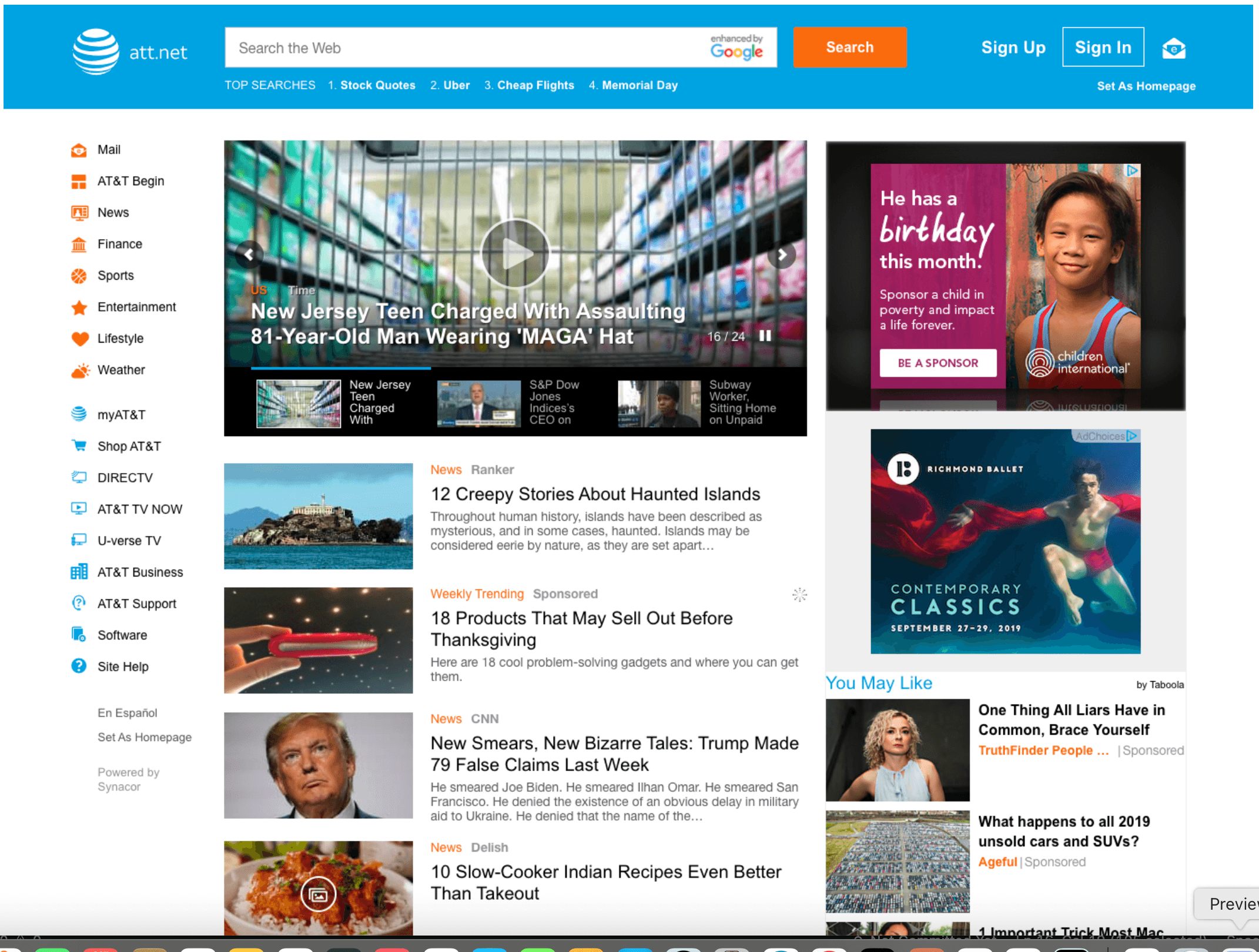Product Manager, Synacor | 2018-2019
Start.att.net was my introduction to data-driven product management at true internet scale. With millions of daily users, every decision was informed by data, every change was A/B tested, and every component was optimized for ad revenue. While the web portal was established, I led the acceleration of development for the companion Android app "AT&T Start," significantly increasing both its feature velocity and ad revenue performance. This was a world of micro-optimizations—moving a content module 50 pixels, adjusting the prominence of a call-to-action, fine-tuning the balance between user experience and monetization. Coming from projects with thousands or tens of thousands of users, working at this scale was revelatory. You could ship a change in the morning and have statistically significant results by afternoon. It was exciting to see how small, thoughtful improvements could translate into meaningful business impact when multiplied across millions of users.

How I Got Here (Or: Never Underestimate Birthday Party Day-Drinking for Networking)
Sometimes career pivots happen in the most unexpected places. I was 37, in grad school, with a pregnant wife and a portfolio of freelance development work that had increasingly morphed into project management and client services. The last thing I was looking for was to become an intern.
Then I went to a friend's birthday party and met Aaron Hettler, a product manager at Synacor. After a free-ranging conversation about technology, user experience, a shared love of the Dodgers, being very dialed in terms of a sense of humor, and the challenges of building products at scale, Aaron convinced me I should apply for a PM role with his manager, Jeffrey "The Corn Dawg" Korn, who would (spoiler alert) go on to become my all-time favorite manager.
So I became what might be the oldest intern in product management history. And honestly? Best decision I could have made. So much of the job came naturally to me after a career spent with a lot of swimming upstream. Or perhaps it was all that swimming that built the habits of mind that made it feel like a great fit.
What Was Synacor?
For those unfamiliar, Synacor was (and is) a white-label platform provider specializing in identity management, content portals, and advertising technology for telecommunications and media companies. Think of them as the behind-the-scenes engine powering the digital front doors of major ISPs and telecom providers.
Their business model was elegant: major companies like AT&T, Verizon, and DISH wanted to offer their customers branded web portals and applications but didn't want to build the infrastructure themselves. Synacor provided the platform, content partnerships, advertising technology, and product development—all operating under the client's brand.
It was technology-as-a-white-label-service before that was a buzzword.
They also had Zimbra, a scalable email platform that was at the time touted as the third place email behind Microsoft's Outlook and Google's Gmail. I imagined it to be a distant third, but because it was extremely low cost and could scale, gigantic entities like the government of India used the platform.
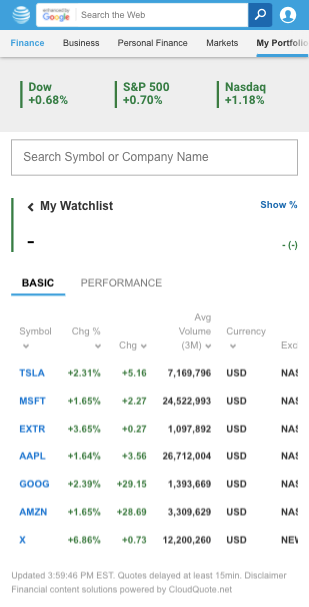
The Product: start.att.net
I worked on AT&T's start.att.net portal, which served as the default homepage for millions of AT&T internet subscribers. This wasn't some niche B2B SaaS product with a few thousand power users—this was a consumer portal with millions of daily active users who saw it every time they opened their browser, so long as they never figured out how to change their homepage.
The portal offered:
- Personalized news and content feeds
- Email access integration
- Local weather and traffic
- Trending topics and entertainment news
- Video content partnerships
- Search functionality (which became a particularly interesting challenge)
- Advertising inventory that generated significant revenue
For someone coming from freelance development projects and grad school, suddenly working on a product that reached millions of users daily was intoxicating. Every change mattered. Every decision had scale.
But most importantly, we offered an integrated Yahoo/AT&T email portal as the pièce de résistance, drawing in users many times a day. Come for the email, stay for the news, videos, weather, stocks, and more.
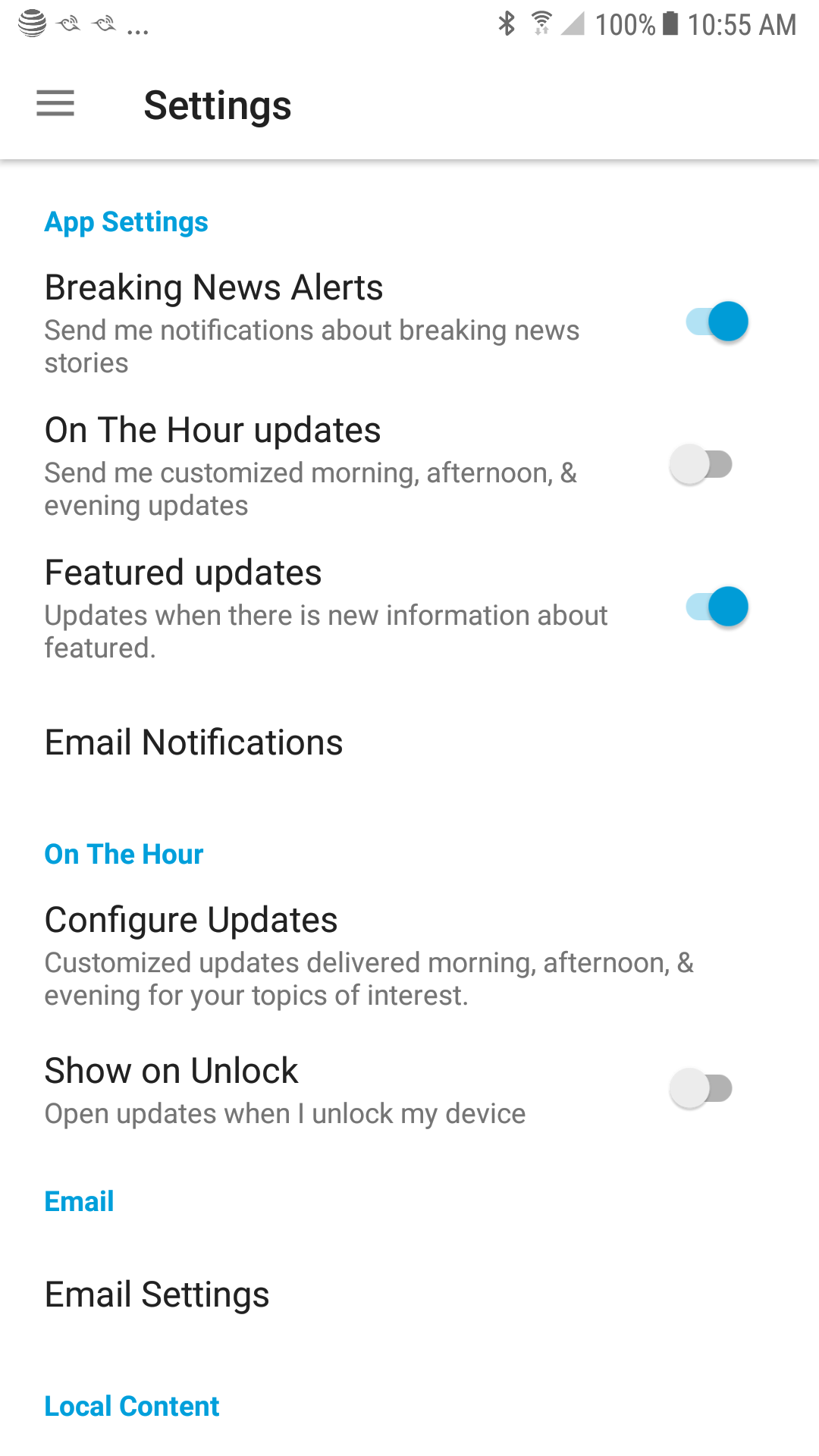
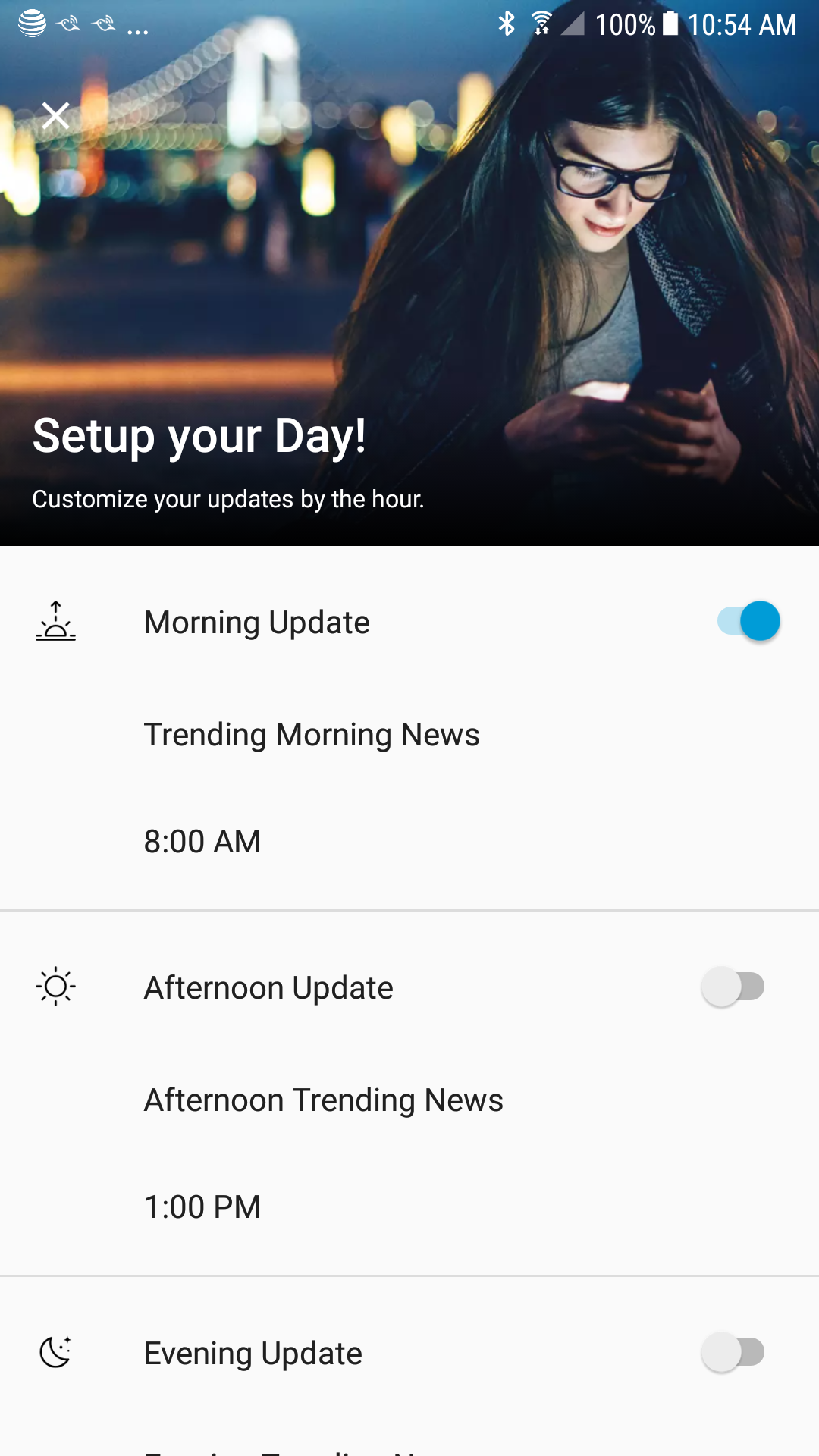
The Joy of A/B Testing at Scale
Here's something they don't prepare you for in grad school: A/B testing at massive scale is absurdly fun.
When you're working on a small product, running an A/B test means waiting weeks to get statistical significance. You're constantly wondering if your sample size is large enough, if seasonal factors are skewing results, if you should just make a decision and move on.
At start.att.net? We'd launch an A/B test and have statistically significant results by lunchtime.
Testing headline phrasing? Significant results in hours.
New layout for the content module? Data by end of day.
Different image treatments? Confidence intervals that would make a statistician weep with joy.
We could iterate rapidly because the feedback loop was so tight. We tested everything:
- Headline formulations and emotional triggers
- Image selection and cropping
- Content placement and hierarchy
- Call-to-action button copy and color
- Module layouts and information density
The data didn't lie, and it didn't take long to tell its story. Some of our most confident assumptions were brutally disproven by user behavior. Some random experiments that we expected to fail became permanent features.
There's something deeply satisfying about making data-driven decisions when you have enough data to actually be confident in those decisions. It de-risks so many product decisions since you can create lightweight prototypes that fail fabulously and save you from developing.

The Google-Android-Search Triangle
One of my more interesting projects involved coordinating between AT&T, Synacor, and Google to ensure that search engine traffic on Android devices was properly routed to Google properties.
This sounds simple—"just make search go to Google"—but the actual implementation involved navigating:
- AT&T's commercial interests and existing partnerships
- Google's technical requirements and Android platform specifications
- Synacor's platform architecture and how it handled search traffic
- User experience considerations to ensure seamless functionality
- High financial stakes between all parties involved
The project required constant communication across three major organizations, each with their own priorities, legal departments, and technical constraints. Getting everyone aligned on implementation details, testing protocols, and rollout timelines was like conducting a very slow, very corporate orchestra.
But we got it done. Search traffic flowed where it needed to go, all parties were satisfied, and users were happy to end up on Google in the end. Sometimes the best product management work is the kind users never notice because it just works.
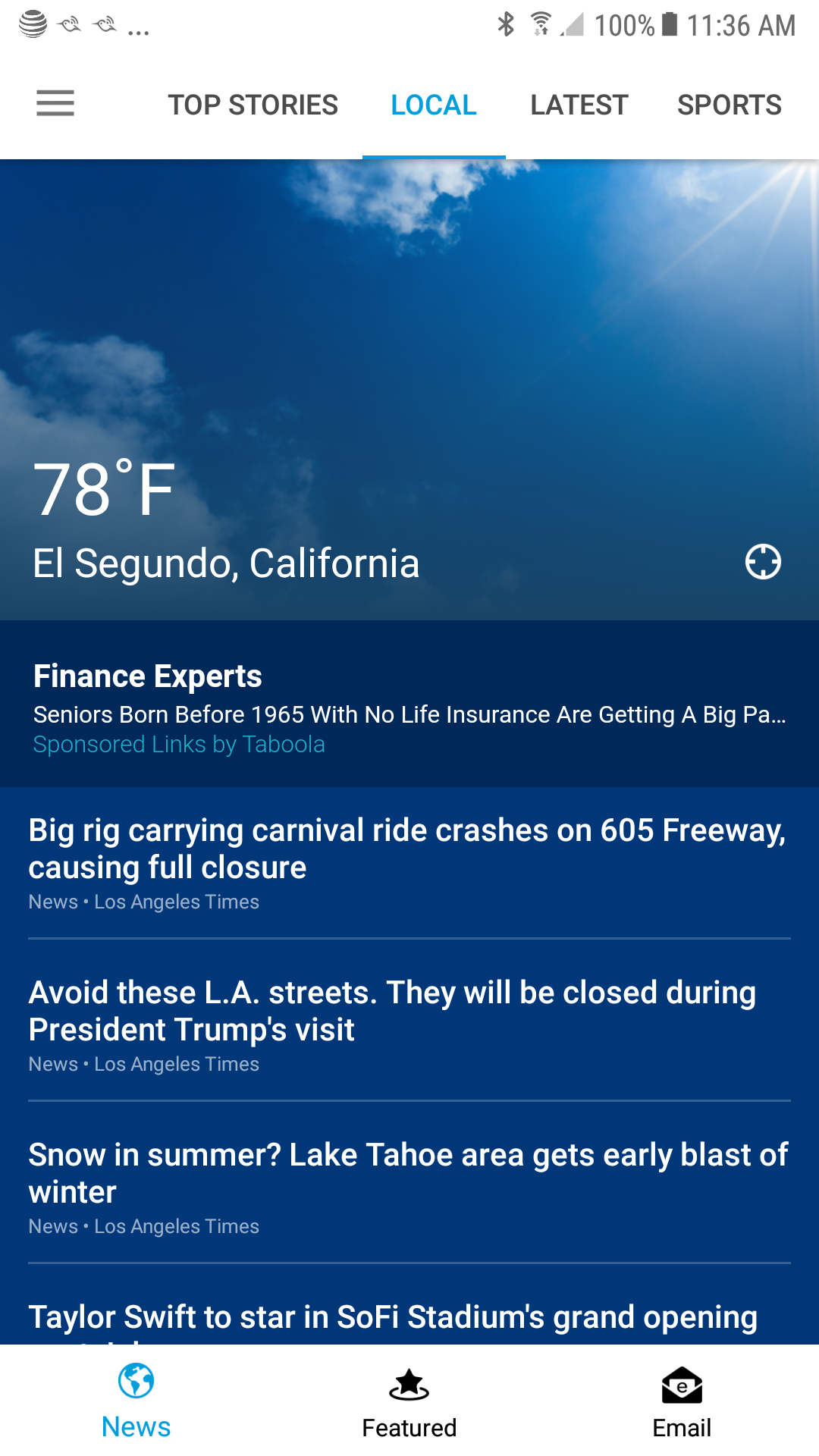
The Android News App: ARPU Gold
The project I'm most proud of was taking on an Android companion news app for AT&T subscribers. The concept was straightforward: give AT&T mobile customers a curated news experience that complemented the start.att.net portal, optimized for mobile consumption.
What made this successful wasn't revolutionary technology—it was solid execution on content strategy, user experience, and advertising integration.
Having the Yahoo/AT&T email management in the app of course was the key ingredient. This was a similar formula to the portal where we leveraged email as a draw to other content.
We focused on:
- Fast, lightweight performance on Android devices (remembering that not every user had the latest flagship phone)
- Personalization based on user interests and reading behavior
- Push notifications for breaking news (carefully calibrated to avoid being annoying)
- Native advertising integration that felt contextual rather than intrusive and that was absolutely everywhere
- Offline reading capabilities for users with limited data plans
The app saw solid adoption among AT&T subscribers, but the real success was in the economics: we achieved amazing growth in average revenue per user (ARPU). The combination of engaged mobile users, quality content, and ubiquitous advertising created a monetization machine that significantly outperformed expectations.
Users were spending meaningful time in the app, advertisers were seeing strong performance, and AT&T was happy with the revenue contribution. Product management trifecta achieved. It was also a solo PM role unlike the portal which took a village, so I was able to hog whatever compliments on the product aspect that came my way.
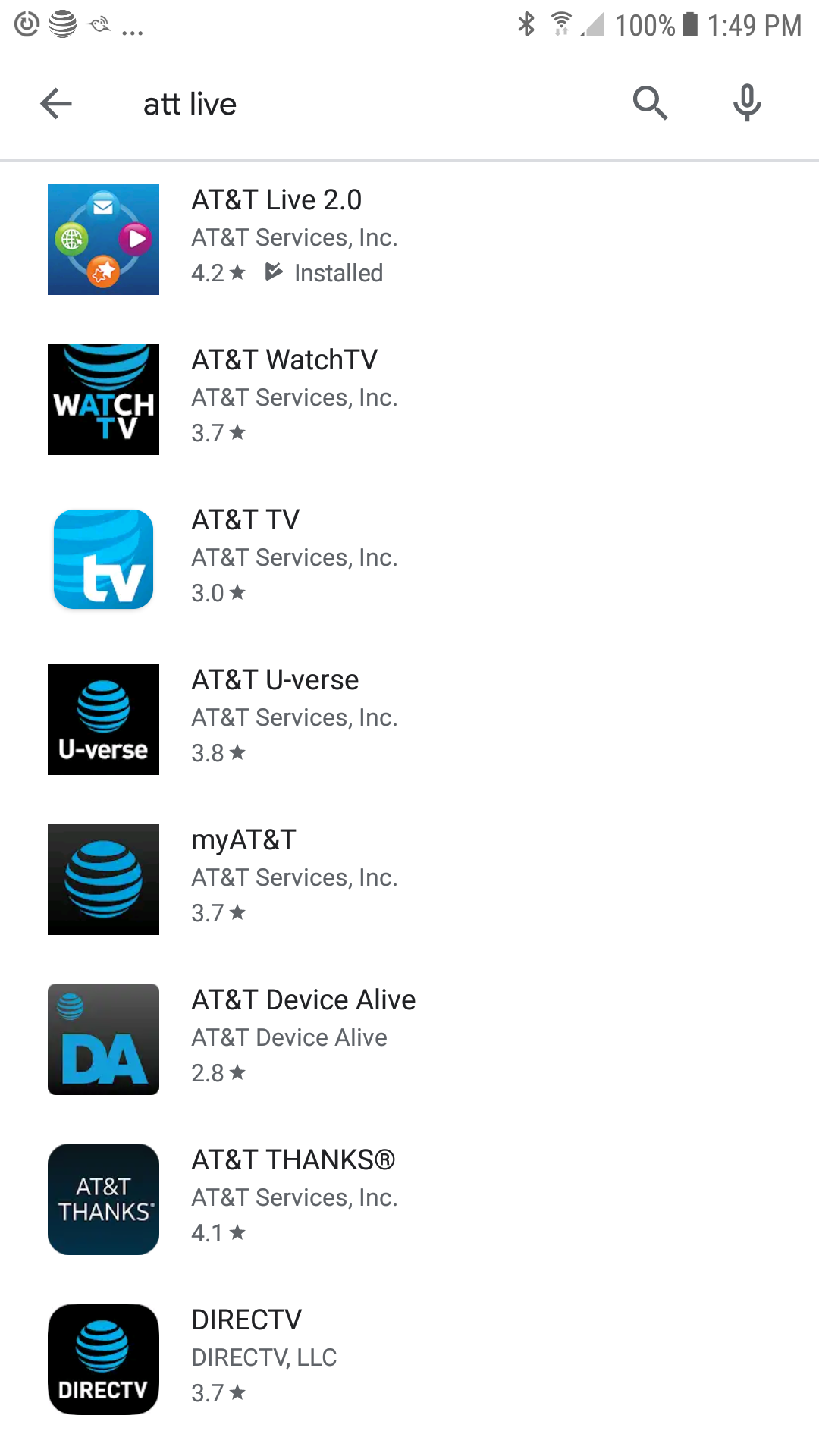
The Content Tightrope: Clickbait vs. Brand Safety
Here's where things got interesting—and occasionally frustrating.
In the mid-2010s, digital media was figuring out the dark arts of clickbait. "You Won't Believe What Happened Next" was reaching peak effectiveness. Upworthy was ascendant. BuzzFeed was printing money. Outbrain and Taboola modules were crowding the bottom of every news site.
We had access to all the same content partnerships and headline optimization techniques. We knew exactly how to drive clicks. And our A/B testing proved, repeatedly, that more provocative headlines and emotionally charged content drove significantly higher engagement.
But we had a constraint that BuzzFeed didn't: AT&T's brand.
AT&T had—quite reasonably—strong concerns about the content we pushed to millions of their customers under their brand. They didn't want start.att.net to feel like a tabloid. They didn't want customer service complaints about offensive content. They didn't want press coverage asking why AT&T was promoting inflammatory clickbait. It is worth stating that AT&T was not conservative simply as a political stance. They are one of the biggest companies in the world with a portal user base that at the time was overwhelmingly older and more conservative.
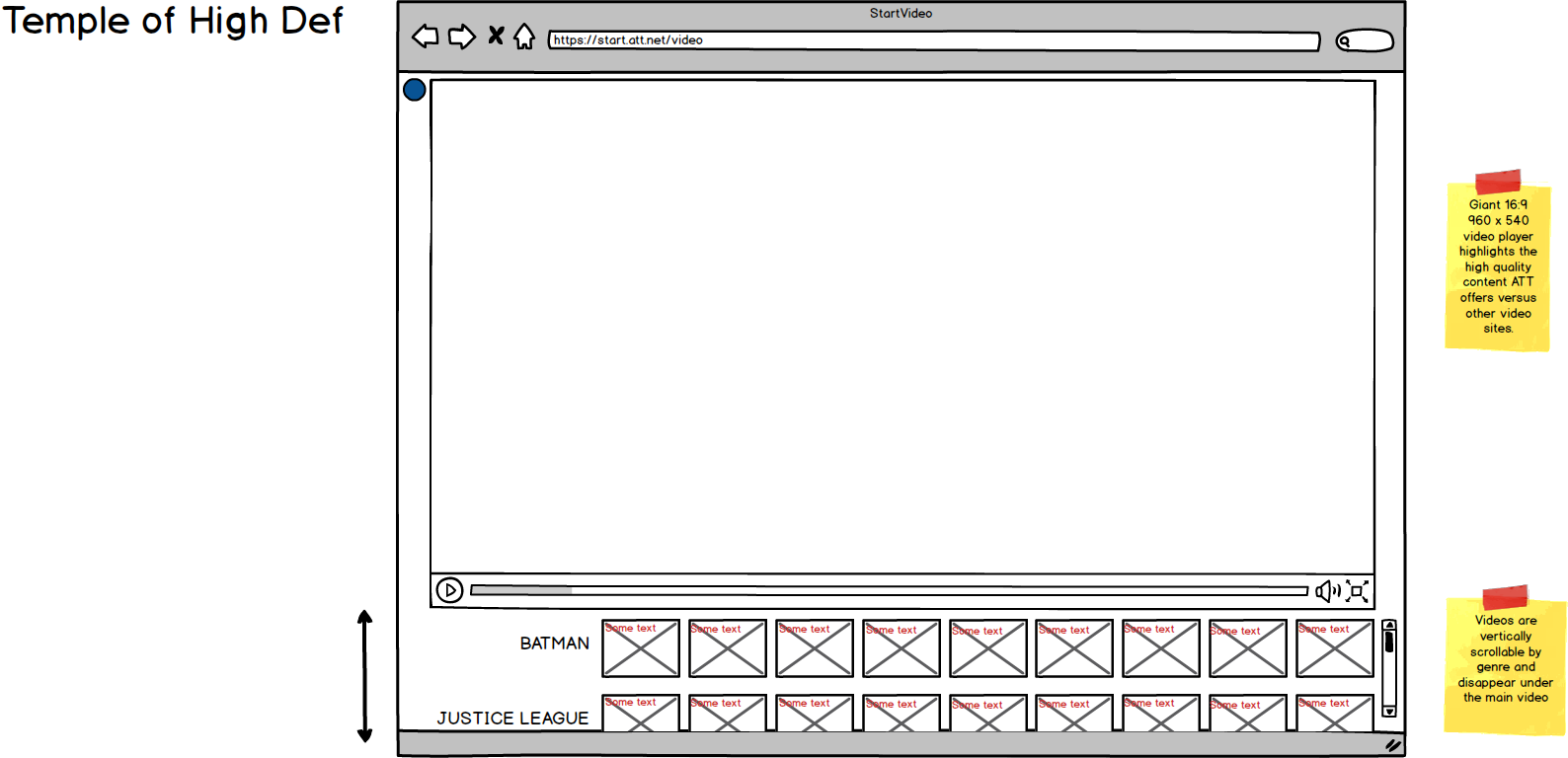
So we operated in a constant tension:
- Our data showed that spicier content drove more engagement
- Our partners were creating increasingly clickable (read: increasingly provocative) content
- Our advertising revenue was directly tied to pageviews and engagement
- Our client had strict guidelines about brand safety and appropriate content
We got pretty good at finding the line—headlines that were intriguing without being exploitative, content that was engaging without being inflammatory, images that caught attention without being inappropriate.
But I won't lie: there were times when we'd look at our A/B test results and think, "Man, if we could just push this 10% spicier, we'd crush these metrics." Then we'd remember that we worked for AT&T, not Vice Media, and we'd dial it back. I can remember a particular article that made it past the content filters having to do with certain bedroom preferences written all in innuendo. As soon as the article was caught we pulled it out of circulation, but could see in the tracking statistics that it was being shared are a far higher rate than anything else we had put out there.
Brand safety was both our constraint and our competitive advantage. While other portals raced to the bottom with increasingly outrageous clickbait, we maintained a quality bar that kept users trusting the platform. Turns out that's worth something.

The Yahoo Ending
All good things must end, and in the peculiar world of corporate telecom partnerships, endings often involve Yahoo.
Yahoo had never left the picture as the provider of AT&T's email product. They had initially run the start website, lost the contract to Synacor, and then won back the contract from Synacor and rebranded the property to currently.com. Our El Segundo office scrambled to find employment elsewhere, as our 20-odd person team was dedicated just to the AT&T account. The product I'd worked on, the features we'd built, the user relationships we'd developed were all trashed. AT&T got out of the branded portal game, as Yahoo branding predominated. C'est la vie.
That's the nature of white-label platform work: you build amazing products, you reach millions of users, you solve fascinating problems—but ultimately, you're building on someone else's land. When the contract changes hands, your work becomes someone else's legacy.
What I Learned
Working at Synacor, as a 37-year-old intern-turned-PM, taught me lessons that shaped the rest of my career:
Scale changes everything. Product decisions at millions-of-users scale are qualitatively different from small-scale decisions. The feedback is faster, the impact is larger, the responsibility is heavier.
Data is your friend, but context is your boss. A/B testing will tell you what users do, but you need business context, brand considerations, and strategic thinking to decide what you should do with that information.
Multi-stakeholder coordination is its own skill. Getting Google, AT&T, and Synacor aligned on search traffic routing taught me more about product management than any textbook could.
Brand safety is a feature, not a bug. The constraints AT&T imposed made us better product managers, even when they were frustrating in the moment.
White-label work has a bittersweet quality. You reach enormous audiences, but always under someone else's brand. You build great products, but their longevity depends on contracts you don't control.
Sometimes the best networking happens at birthday parties. Thanks, Aaron (and Brian the birthday boy).
The Metrics That Mattered
Since this is a project description, here are some numbers that tell the story:
- Millions of daily active users across start.att.net and mobile apps
- Statistical significance in hours for A/B tests due to traffic volume
- Exceptional ARPU growth for the Android news app (specific numbers confidential)
- Successful coordination between three major tech companies (Google, AT&T, Synacor) on search traffic implementation
- Near zero major brand safety incidents despite millions of content impressions daily
- Launched and scaled Android app from modest beginnings to significant user adoption
Final Thoughts
Working on start.att.net was my introduction to product management at scale, and I couldn't have asked for a better education. I learned to navigate complex stakeholder relationships, make data-driven decisions quickly, balance business objectives with user needs, and ship products that millions of people used daily.
Was I a 37-year-old intern? Yes. Did I have a pregnant wife and grad school commitments while learning this role? Also yes. Did attending a birthday party and meeting Aaron Hettler change the trajectory of my career? Absolutely.
Sometimes the best opportunities come from unexpected places. And sometimes being the oldest intern in the company history means you bring a decade of freelance project management experience and a decade of running your own company that translates surprisingly well to product management and promotion to full time employment. Turns out I had been doing a fair amount of product management all along without knowing it.
RIP start.att.net.
For more information about specific projects, metrics, or lessons learned from this experience, feel free to reach out.
